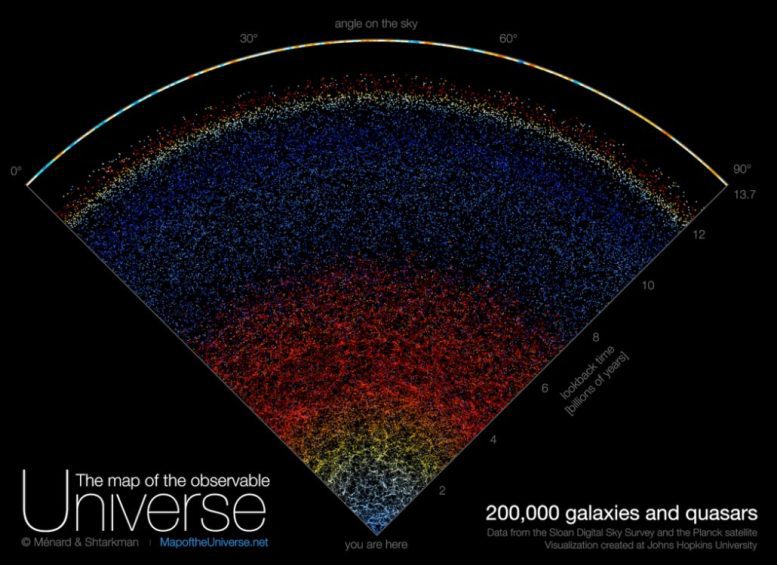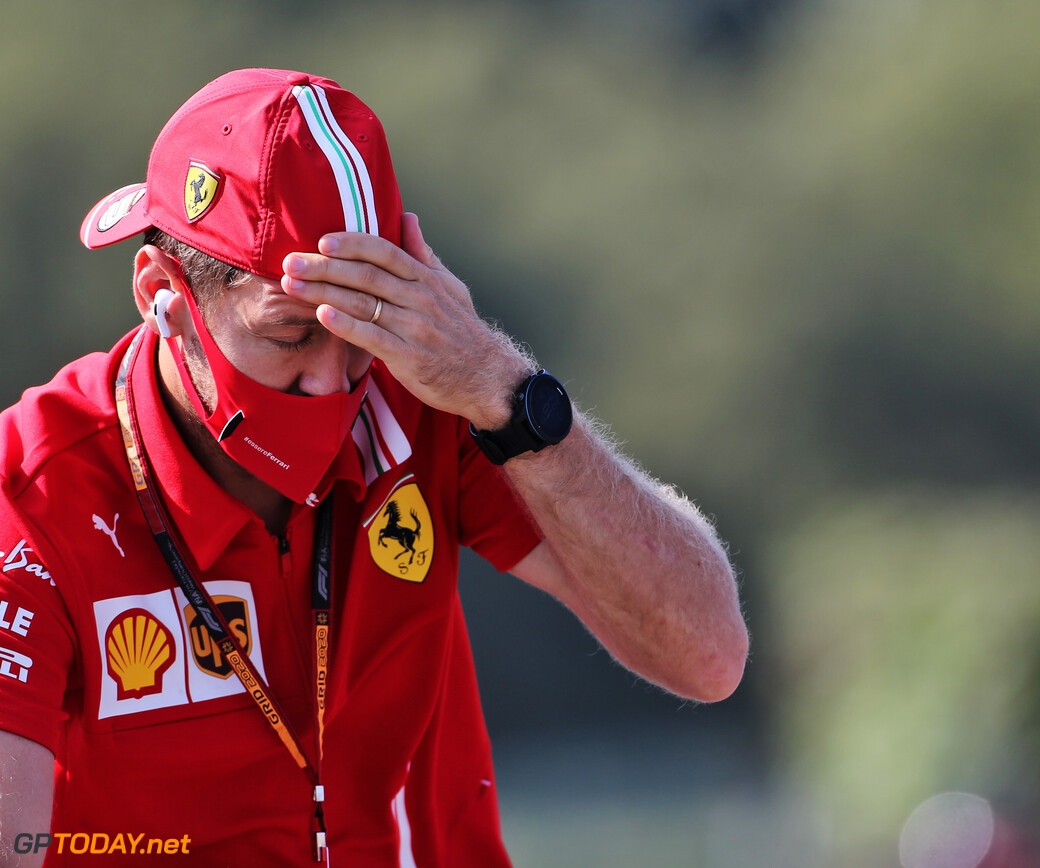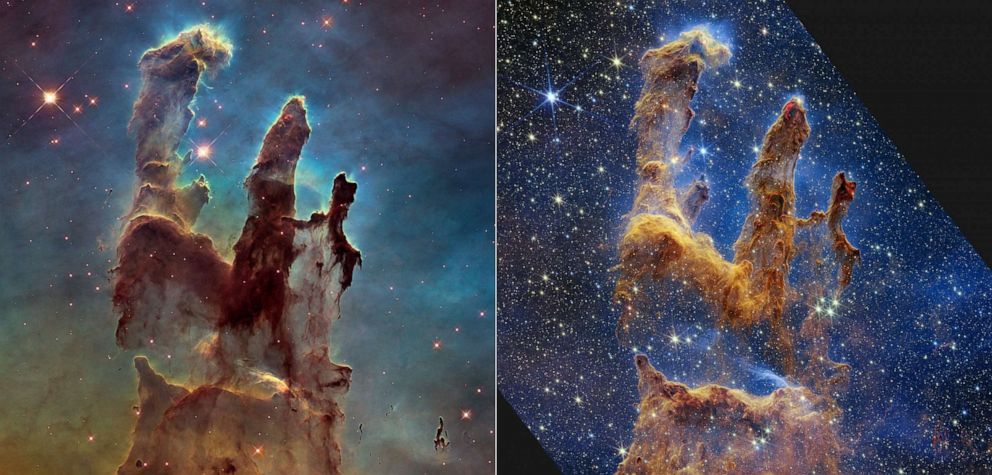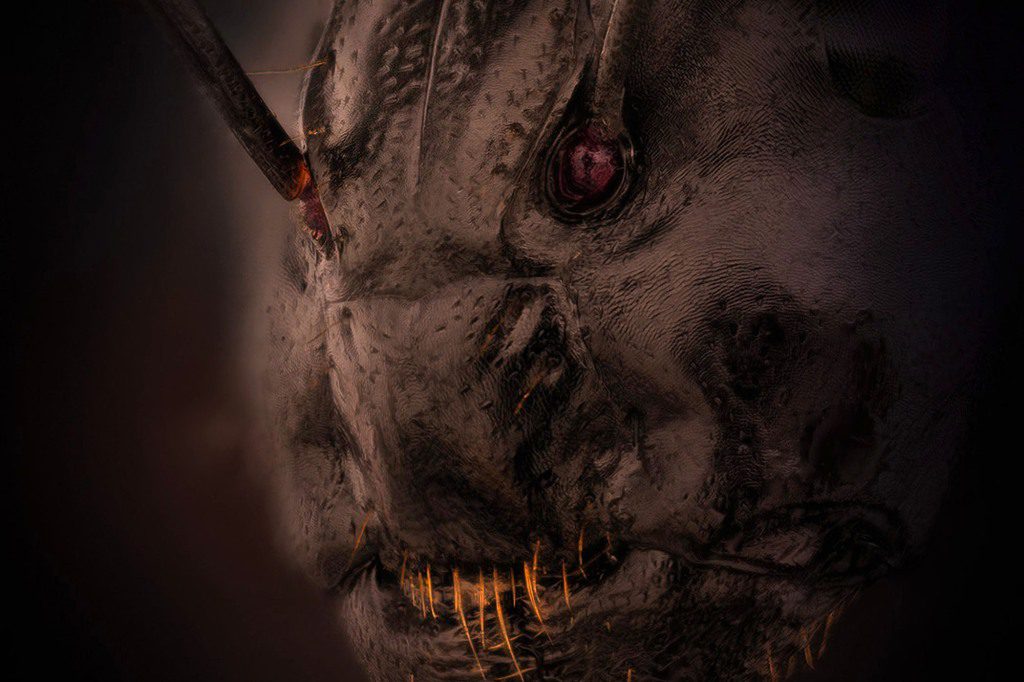Bryce Maynard (à gauche) et Nikita Shtarkman examinent une carte de l’univers visible. Crédits : Will Kirk/Université Johns Hopkins
La carte trace une grande partie de l’univers[{” attribute=””>Milky Way to ‘the edge of what can be seen.’
A new map of the universe displays the span of the entire known cosmos for the first time with pinpoint accuracy and sweeping beauty.
Compiled from data mined over two decades by the Sloan Digital Sky Survey, the map was created by astronomers from Johns Hopkins University. It allows the public to experience data previously only accessible to scientists.
The interactive map depicts the actual position and real colors of 200,000 galaxies. It is available online, where it can also be downloaded for free.
Une nouvelle carte de l’univers montre pour la première fois tout l’univers connu avec une précision et une beauté étonnantes. Crédit : Université Johns Hopkins
« En grandissant, j’étais très inspiré par les images d’astronomie, d’étoiles, de nébuleuses et de galaxies, et maintenant il était temps de créer un nouveau type d’image pour inspirer les gens », explique le concepteur de cartes Brice Ménard, professeur à Johns Hopkins. Les astrophysiciens du monde entier analysent ces données depuis des années, ce qui a donné lieu à des milliers d’articles scientifiques et de découvertes. Mais personne n’a pris le temps de créer une carte qui soit belle, scientifiquement exacte et accessible aux non-scientifiques. Notre objectif ici est de montrer à tout le monde à quoi ressemble vraiment l’univers.
Le Sloan Digital Sky Survey est un effort pionnier pour capturer le ciel nocturne avec un télescope au Nouveau-Mexique. Nuit après nuit, le télescope a passé des années à se concentrer sur des endroits légèrement différents pour capturer cette perspective extraordinairement large.
La carte montre une partie de l’univers, soit environ 200 000 galaxies – chaque point sur la carte est une galaxie, et chaque galaxie contient des milliards d’étoiles et de planètes. La Voie lactée n’est qu’un de ces points, qui se trouve au bas de la carte. Maynard a créé la carte avec l’aide de Nikita Shtarkman, une ancienne étudiante en informatique de Johns Hopkins.

Créée par des astronomes de l’Université Johns Hopkins à l’aide de données collectées sur deux décennies par le Sloan Digital Sky Survey, la carte permet au public de découvrir des données auparavant uniquement disponibles pour les scientifiques. Crédit : Université Johns Hopkins
La carte est plus colorée en raison de l’expansion de l’univers. Par conséquent, plus un objet est éloigné, plus il apparaît rouge. Peu de temps après, la première rafale de rayonnement a été émise[{” attribute=””>Big Bang, 13.7 billion years ago is revealed at the top of the map.
“In this map, we are just a speck at the very bottom, just one pixel. And when I say we, I mean our galaxy, the Milky Way which has billions of stars and planets,” Ménard says. “We are used to seeing astronomical pictures showing one galaxy here, one galaxy there or perhaps a group of galaxies. But what this map shows is a very, very different scale.”
Ménard hopes people will experience both the map’s undeniable beauty and its awe-inspiring sweep of scale.
“From this speck at the bottom,” he says, “we are able to map out galaxies across the entire universe, and that says something about the power of science.”



« Avid alcohol nerd. Infuriatingly humble entrepreneur. Social media specialist. Award-winning organizer. General Twitter lover. Beer expert. »







